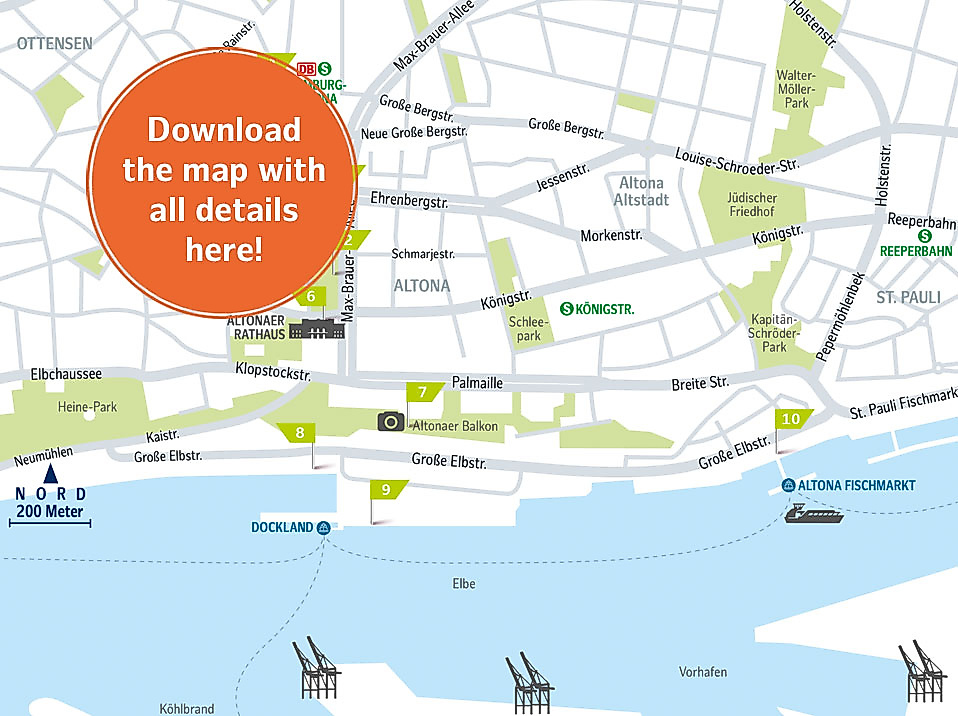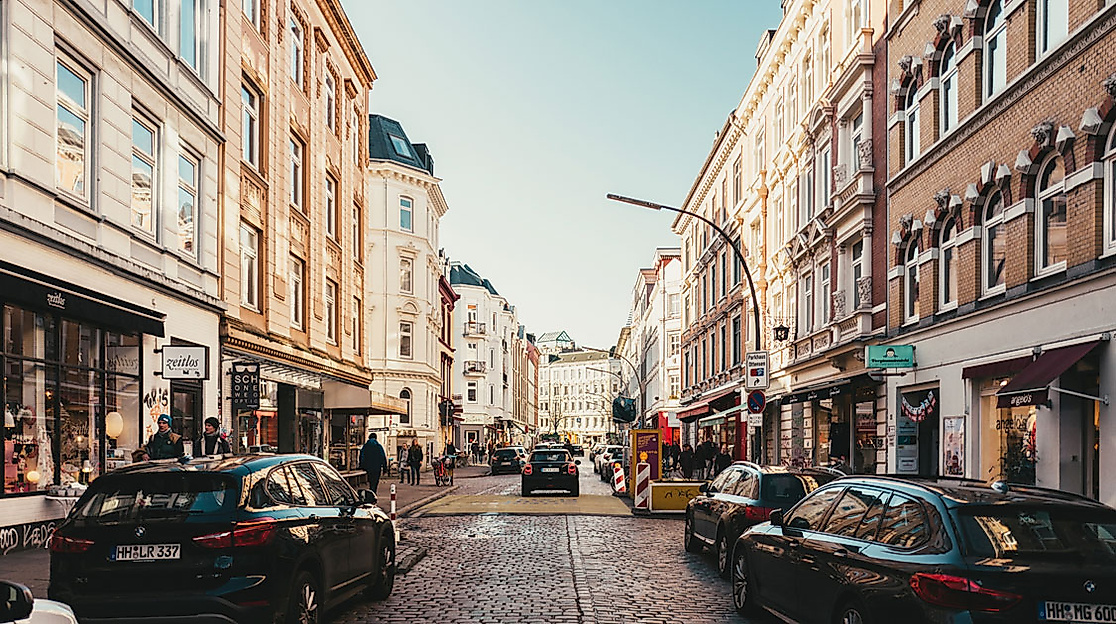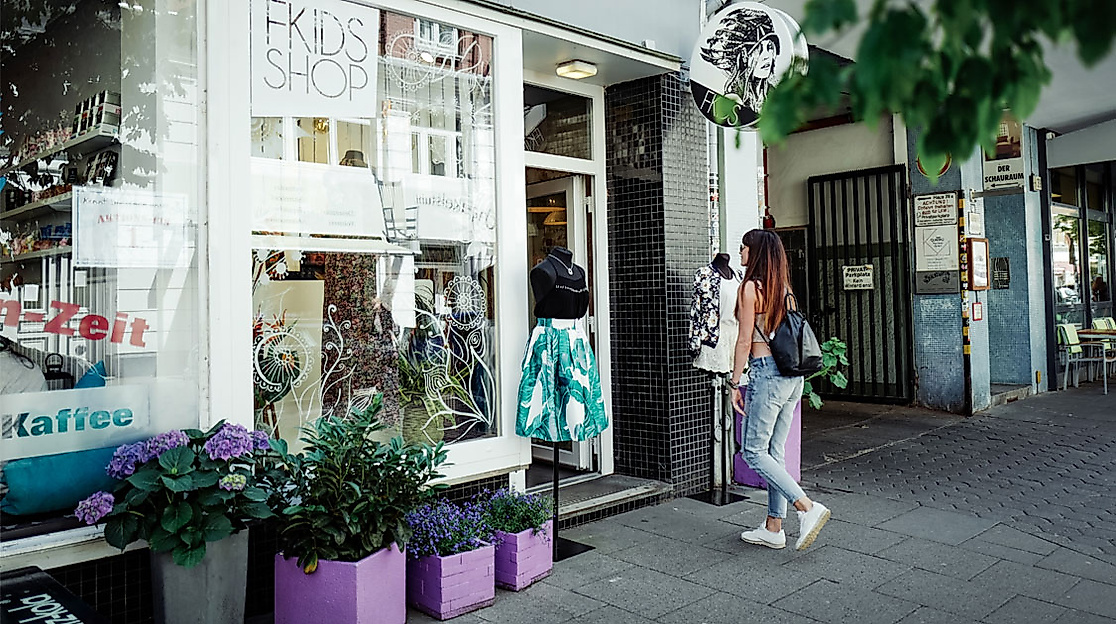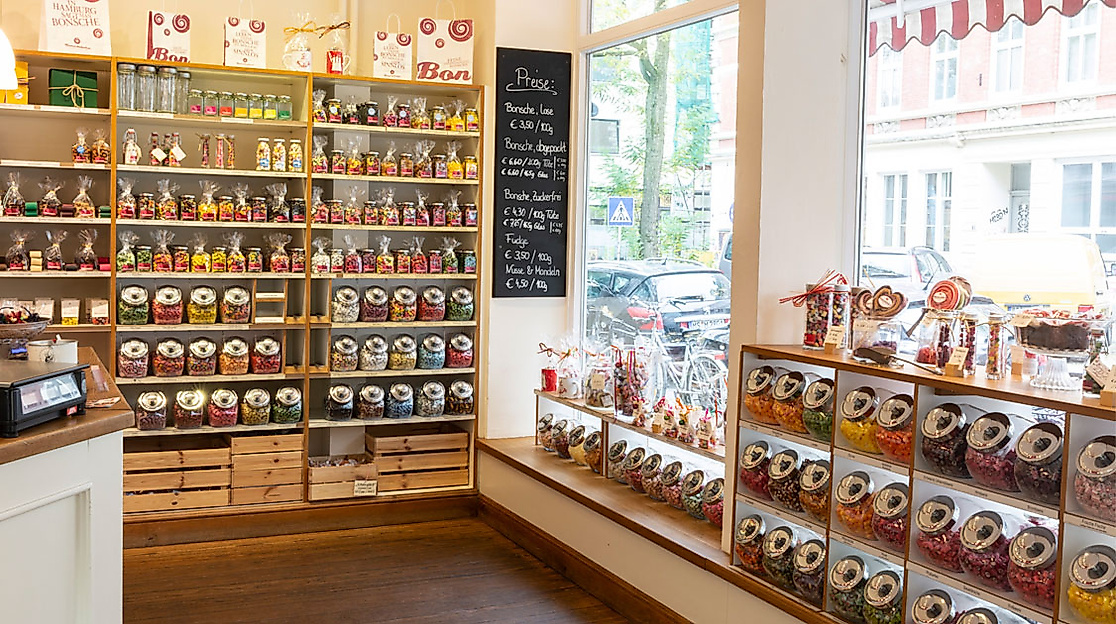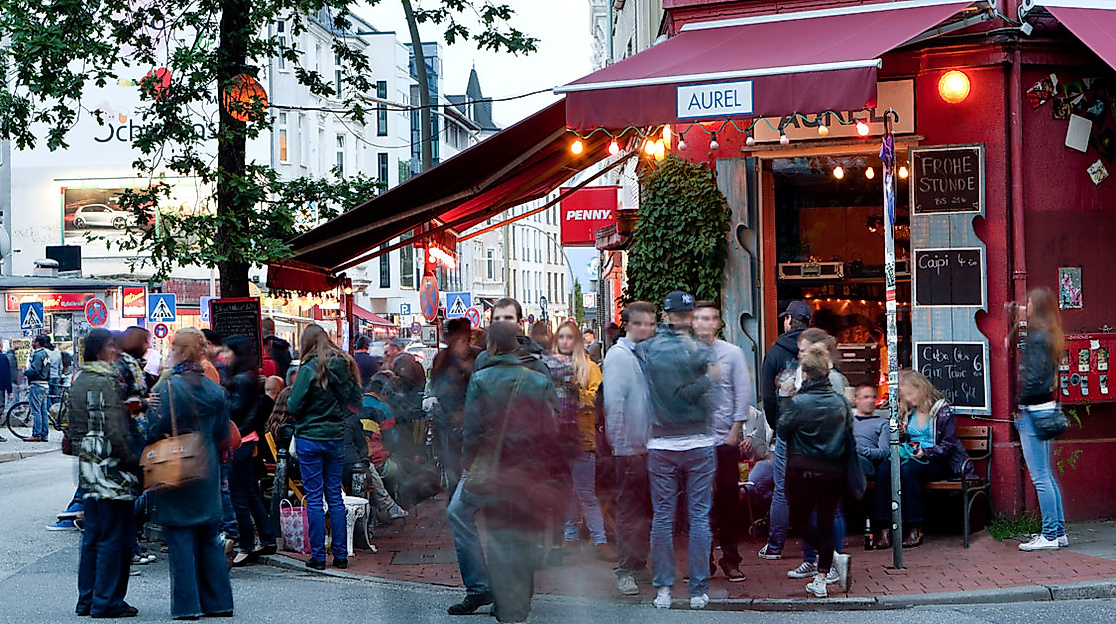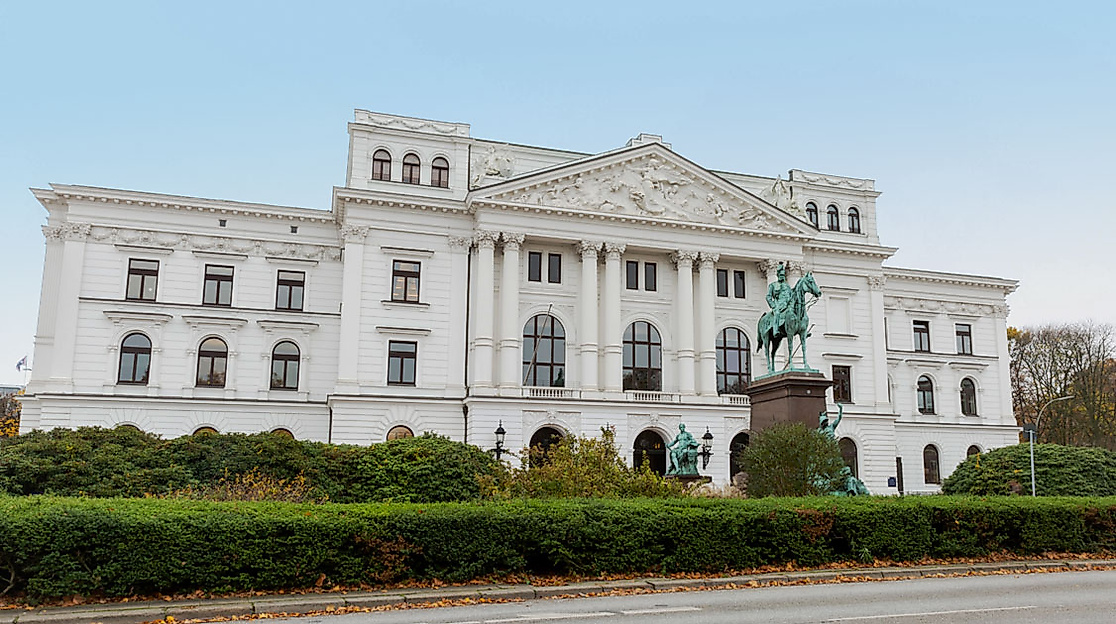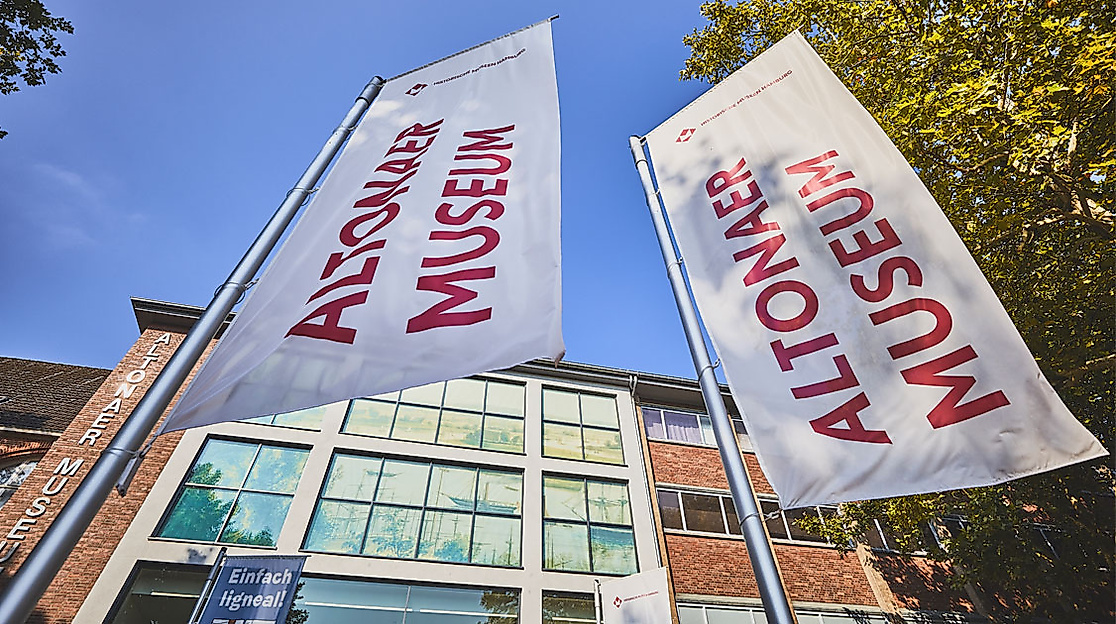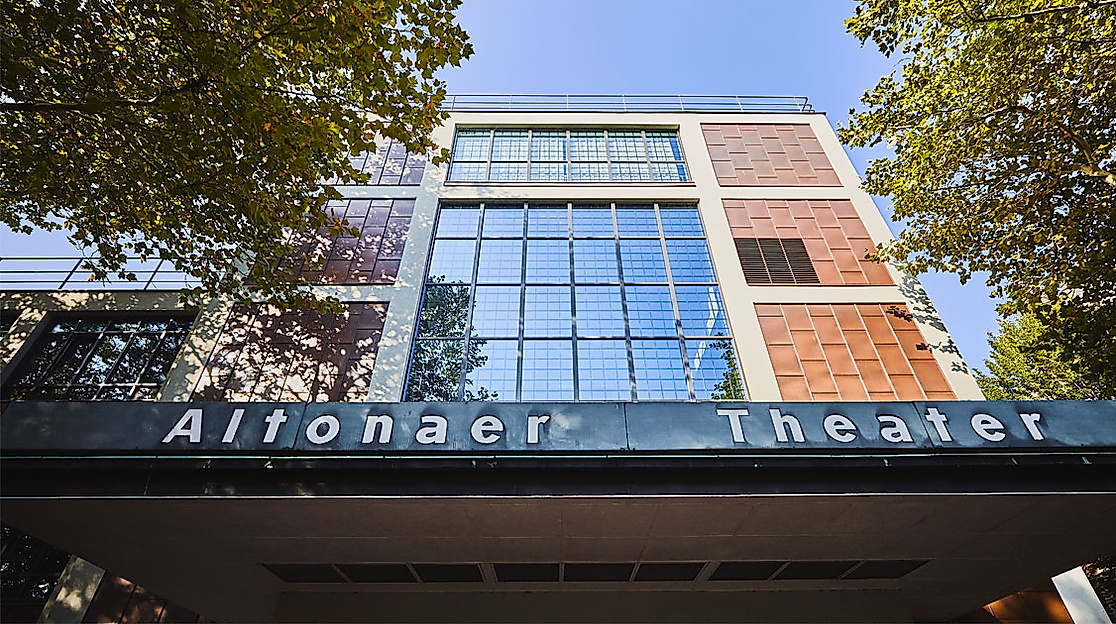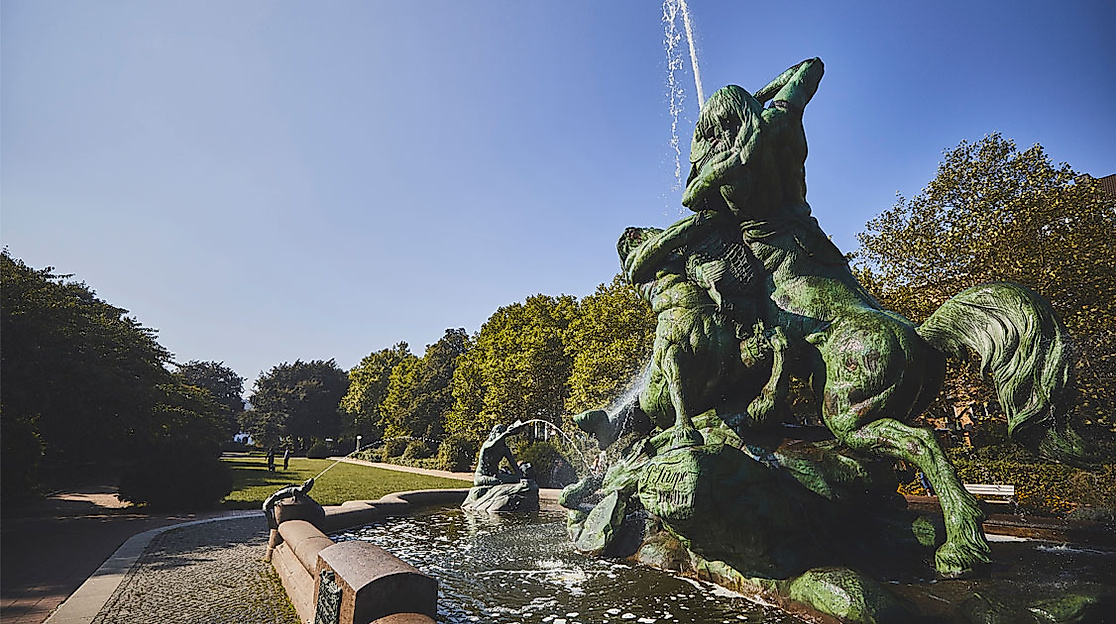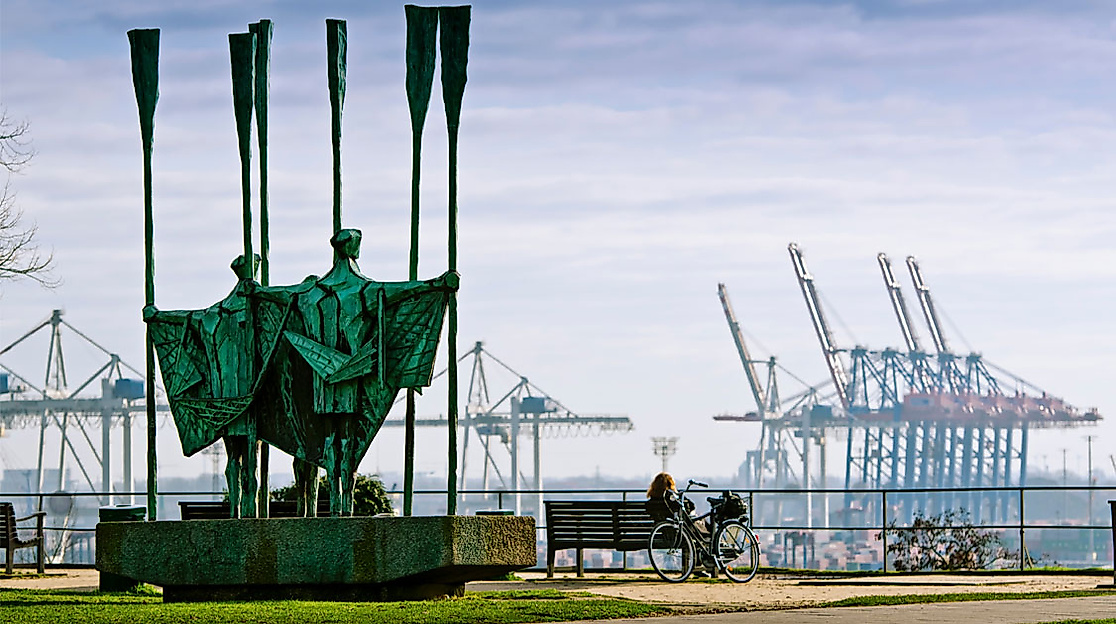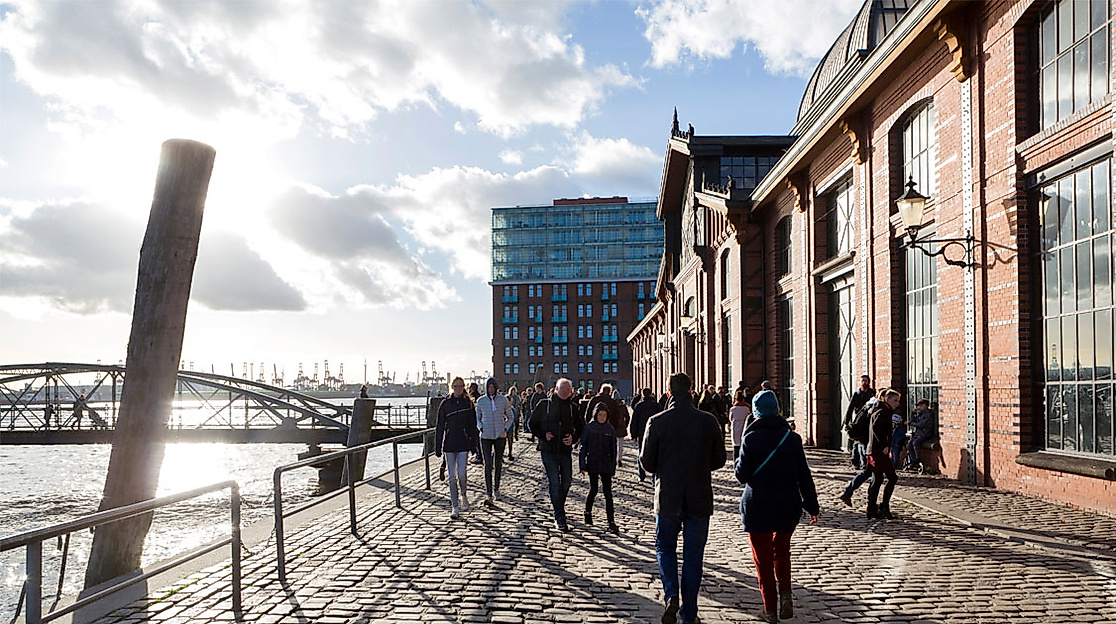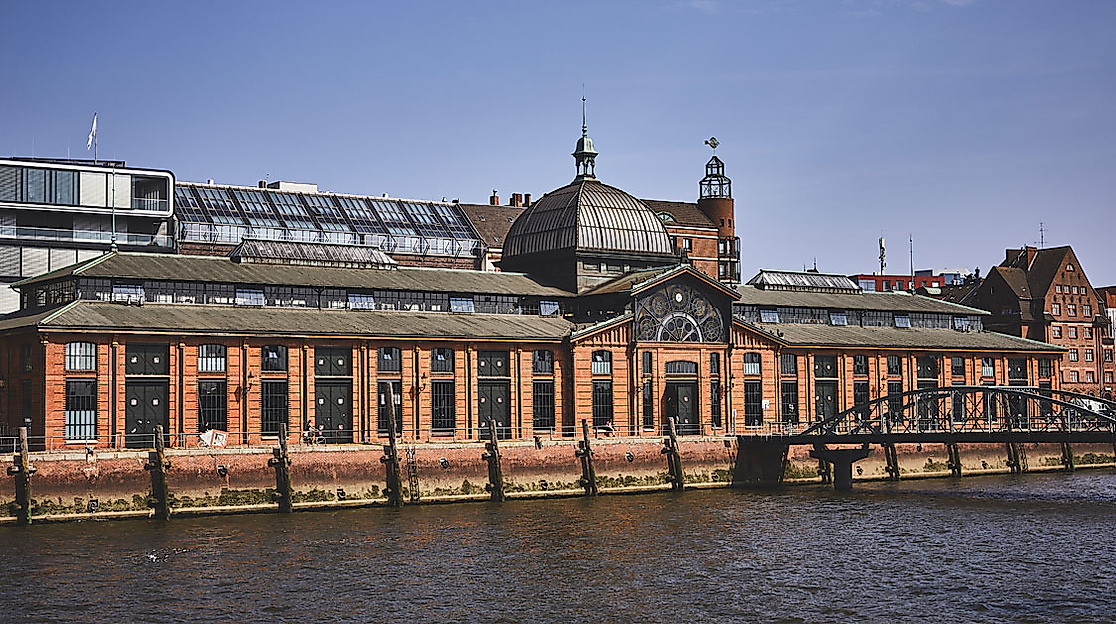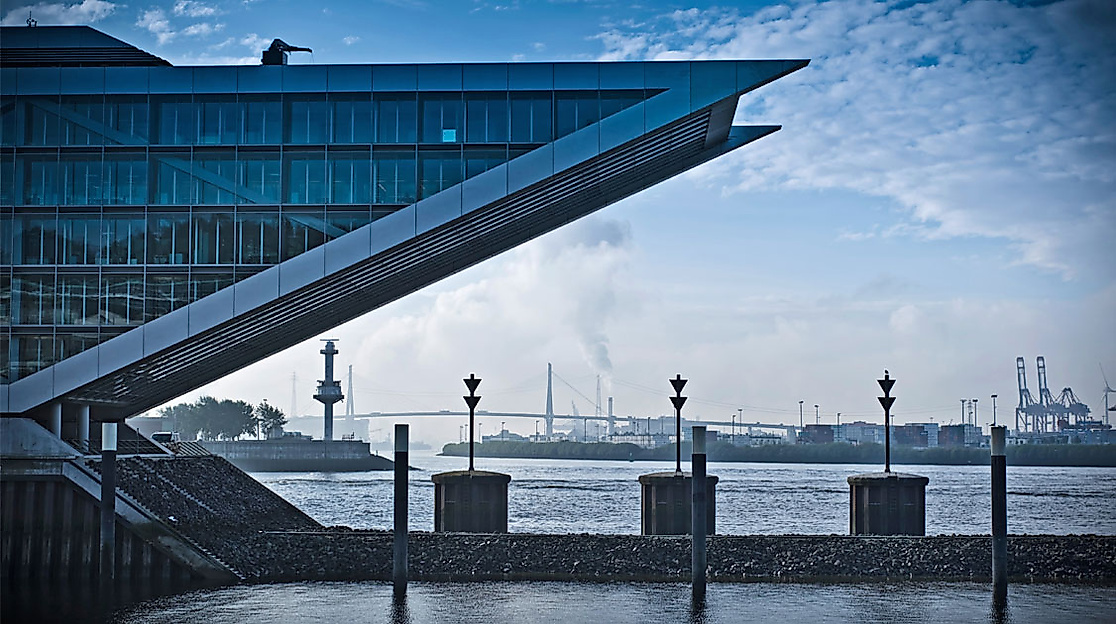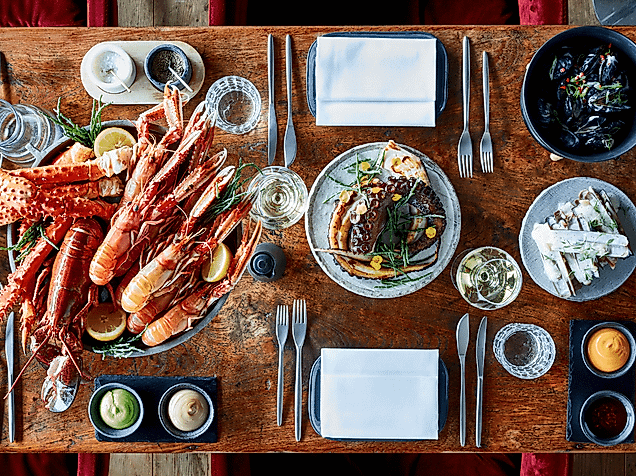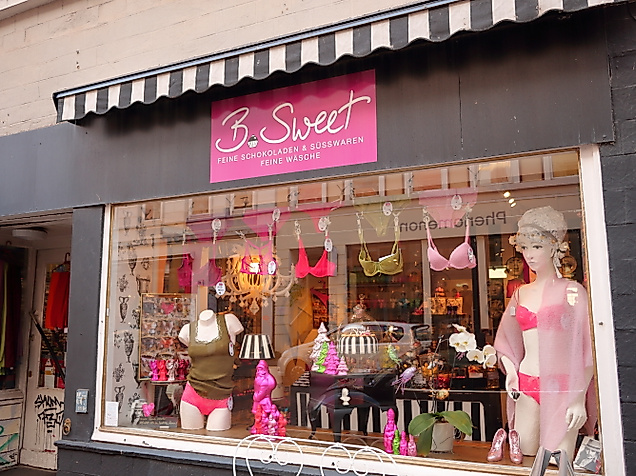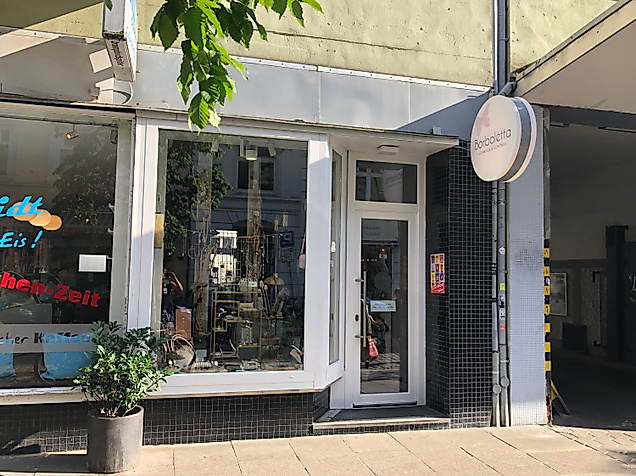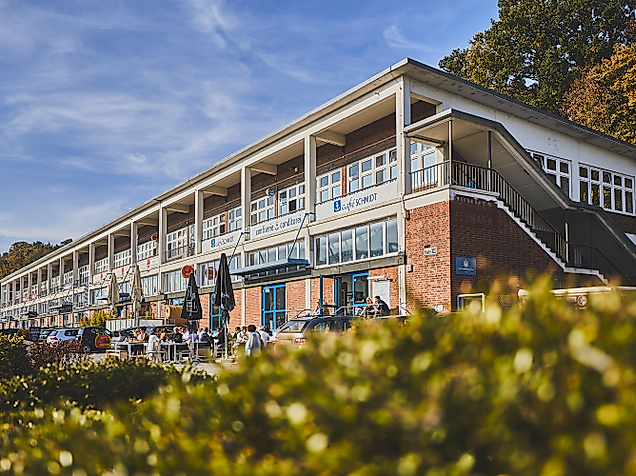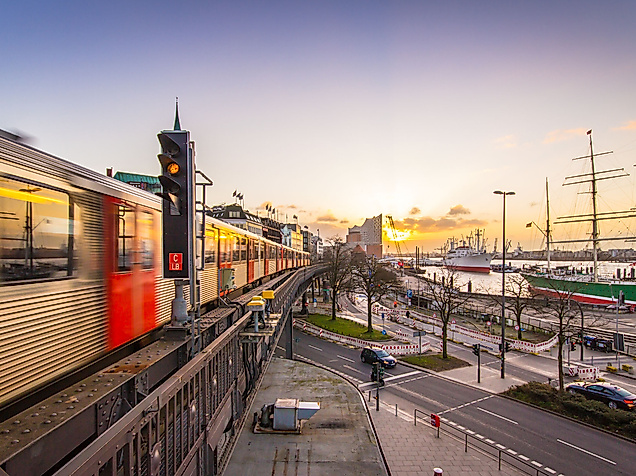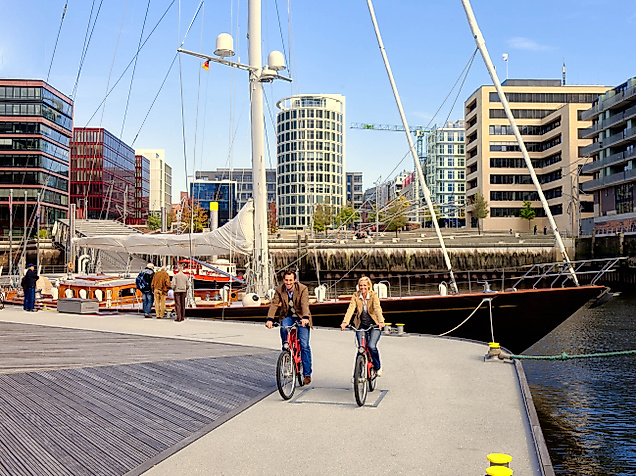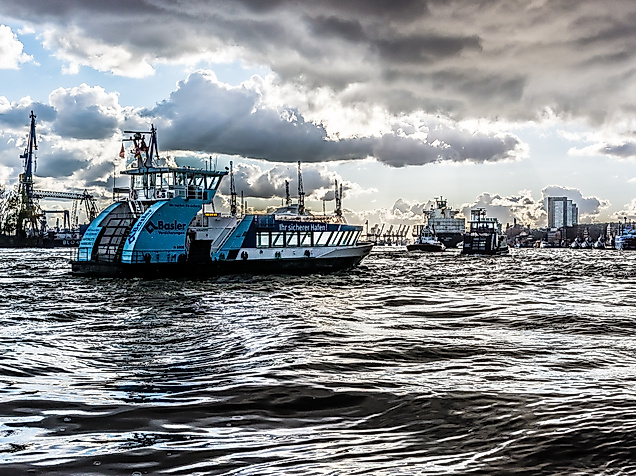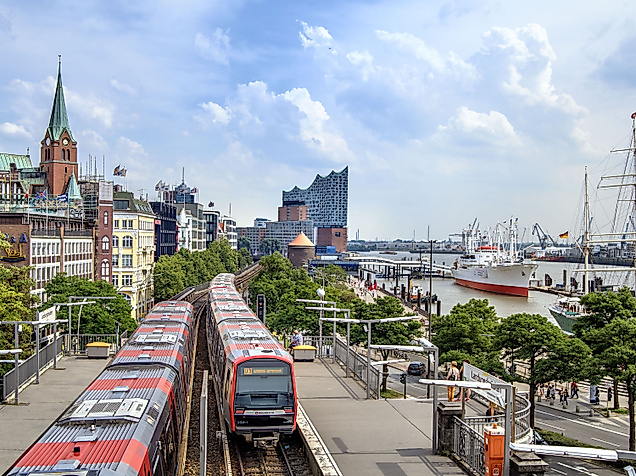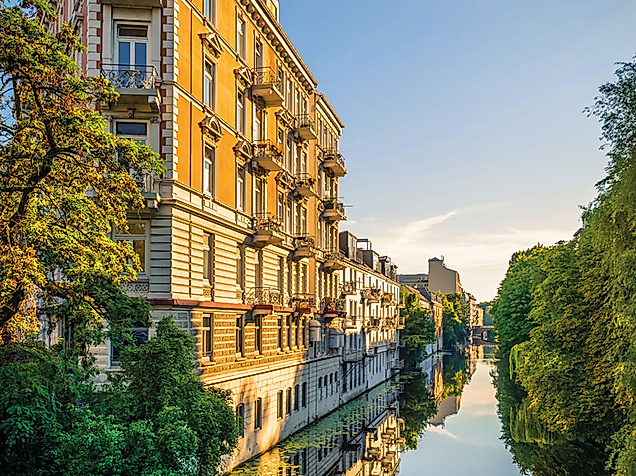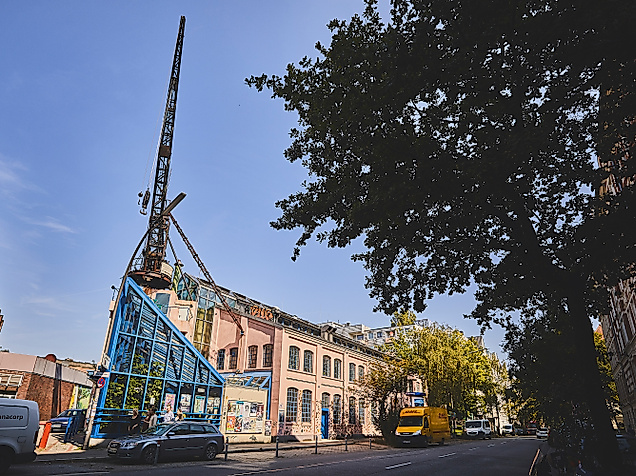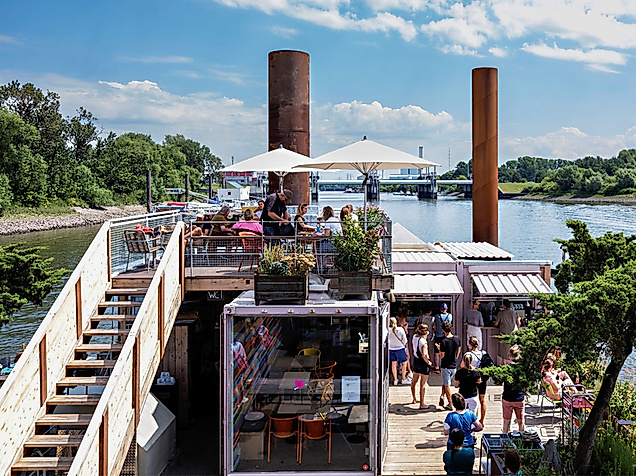
Panoramic route
- Trendy Ottensen district
- Elbe panorama
- Fishing port atmosphere
The route in a nutshell
The route has a length of about 5 km and is best enjoyed on foot.
A stroll through Ottensen: shopping and refreshment to your heart’s content
Taking off from Altona station, you simply follow the signposts to Ottenser Hauptstrasse. Once you've reached this street, you're ready to explore Ottensen – with owner-operated shops offering original products, from clothing, interior design and stationery to children’s products and concept stores. That said, in Ottensen you can also find popular high-street brands, so there’s definitely something for everyone. In the market hall of the Mercado shopping centre, more than 30 vendors offer their goods. Fish and poultry, fruit and vegetables, sweets and flowers: here you can find local produce alongside Asian, Italian and Turkish specialities, with many gourmet stalls as well as an exquisite wine bar.
While there, make sure to also meander through the beautiful side streets of Ottensen. You will be able to explore a popular residential area with fabulous ornate buildings. In Ottensen, it is not uncommon to bump into familiar faces from film and television, and yet this quarter directly on the Elbe is also popular with families. As you navigate the streets you will find a wide range of places to stop for refreshment. Whether it's a sweet nostalgic café, a vegan burger restaurant or a quaint corner pub you end up in, there’s one thing for sure: Ottensen is anything but boring.
Following a historic path towards the River Elbe
From the area around the Altona railway station you now want to head south in the direction of the River Elbe. Soon you will reach Platz der Republik – a well-kept park at the interface of Altona and Ottensen. When, at the end of the 19th century, the old Altona railway building was moved further north, an open space was created between the new and the original premises. Today, the old premises are home to the Altona town hall. The beautiful columned building in white neoclassical style is a popular destination for registry office weddings. In summer, the inner courtyard serves as a venue for open-air film screenings as well as occasional outdoor exhibitions. Since 1898, the north side of the building has been adorned with an equestrian statue of German Emperor William I. At the time, the unveiling was attended by Emperor William II and his wife.
To the west of the park, you will see the Altona Museum and the adjacent Altonaer Theatre. With a focus on art and cultural history, the museum allows insights into the cultural and historical evolution of the Elbe region around Altona as well as the coastal regions of the North and Baltic Seas. The Altonaer Theatre is a popular theatre stage featuring both classic drama and contemporary pieces. In the park itself, it is worthwhile seeing Stuhlmann fountain, an imposing multi-figure fountain with a water feature, as well as the Black Form sculpture dedicated to Altona’s destroyed Jewish community.
Once you’ve taken in the history, the Elbe awaits you with a panoramic view
Moving away from the Altona town hall and heading south, you will cross the elegant Palmaille street. From here you can already get a glimpse of Hamburg's port panorama on the horizon, screeching seagulls included. From a distance you will hear the muffled sound of port cranes stacking shipping containers on top of each other and the horns of departing ships sending a farewell signal to Hamburg. So this is what Hamburg’s port is all about, and from the Altonaer Balkon viewing platform you’ll have a wonderful view of it. While you are here, do as the locals do and enjoy the view with a cool drink on one of the benches that invite you to linger. After your little rest you can now descend one of the winding paths towards Grosse Elbstrasse. There you will find the Fischereihafen – the historic Altona fishing port established in 1921. Even today, around 36,000 tonnes of fresh fish are handled here every year, and more than 50 fish-related businesses and restaurants are located here. Perhaps the most famous landmark here is the historic fish auction hall. Built in the style of a Roman basilica, it features red-brick walls supporting a roof vault of iron and glass. The St Pauli Fischmarkt square outside the building is also the place where Hamburg’s legendary fish market is held every Sunday.
Here at the quays, tradition meets modernity: historic red-brick warehouses are complemented by modern, state-of-the-art architecture with futuristic office and service buildings. As you walk further, you will also see the striking building of the Altona cruise terminal, which is home to a special highlight for culture fans: In the Opernloft, each opera lasts just a refreshing 90 minutes. And you can enjoy a magnificent view of the Elbe. For your journey back into town, you can hop onto the port ferry 62 from Dockland (Fischereihafen) or Altona (Fischmarkt) towards the city centre.
Did you enjoy the Panoramic route? We’d love to hear your feedback via mail. Discover even more unique Hamburg corners on our city map.
Gastronomy & shopping on this route
The colourful, lively quarter of Ottensen has a lot to offer, and this is especially true when it comes to independent boutiques and retail shops. The same can be said about Ottensen’s exciting culinary scene, which caters for almost every taste.
